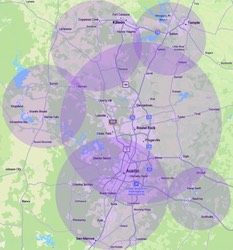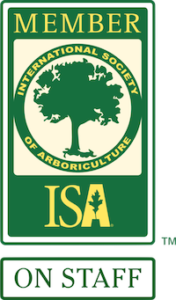Central Texas has experienced prolonged drought, large temperature swings, and epic ice storms in recent years. These conditions put a lot of stress on the natural landscape. Here’s a quick guide to understanding how to care for your central Texas trees.
Inspect Your Trees for Signs of Distress
If you notice discolored leaves or leaves that are falling prematurely, your tree may be in distress. Oak wilt, a fungal infection that devastates oak trees throughout central Texas, presents with discoloration along leaf veins or defoliation in the crown, depending on the species of oak tree. Red oaks develop fungal mats within the bark and invariably die once the disease takes hold. The mats release an odor that attracts insects, particularly beetles. When they depart the fungal mat and land on recent cuts or wounds in other oak trees, they spread the fungus and the disease. Some oaks grow in groups with intertwined roots, which is another means of transmission.
Other indicators of tree stress include dying or dead branches, damaged roots, nesting holes in the trunk, mushrooms growing around the base, and other insect damage from termites or carpenter ants. These conditions can be dangerous, causing trees to drop branches or even fall. Contact a certified arborist for advice as soon as you notice any signs of distress.
Water and Mulch with Care
Trees benefit from slow, deep, less frequent watering rather than light watering every other day or so. Water the area from the drip line (the widest part of the canopy where rain drips to the ground) away from the trunk to the edge of the root zone. This area may extend beyond the width of the canopy in mature trees.
You should water trees about every two weeks in summer and once a month in the winter if there has been no substantial rain. The soil should be moist to a depth of four or five inches in the watered area a day after watering. You can check this using a screwdriver or a trowel. Use a soaker hose, buckets, or bottles with holes punched in the bottom to allow water to slowly soak into the watering zone. In Austin, watering restrictions may be in place, so check with the city to ensure you won’t be cited for a violation.
Some homeowners and even landscapers still haven’t gotten the message about “volcano mulching.” This is when a deep pile of mulch hugs the tree right around its base. You need to be able to see the beginning of the roots, or root flares, or else you can get root rot. If you don’t, your trunk will dry out, and the inside of the roots will become mush. Therefore, apply two to three inches of organic mulch at least five inches away from the base of the trunk, extending outward away from the trunk. You can apply compost out to the edge of the canopy before you put down mulch in the spring and the fall, also keeping away four to five inches away from the base of the tree.
Pruning
Pruning provides light and air to lower branches, removes problem branches that could create hazards, and shapes and beautifies trees. Pruning trees yourself generally isn’t a good idea, especially if it means getting up on a ladder. Tree care professionals will know which branches to remove and how to shape the tree to optimize growth, beauty, and safety. Certified arborists familiar with the area’s climate and conditions and how they affect caring for your central Texas trees should perform any tree trimming in Austin, Texas.


